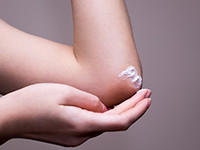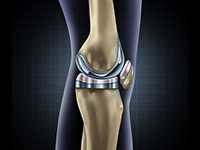
A monthly health newsletter for patients |
August 2016 |
|
7 Essential Items for a Safe Summer
|
|
New Gene Therapy Protects Against Peanut Allergy
Peanuts are the most common food that induce fatal or near-fatal reactions in those who are allergic to them, yet preventive treatment is limited. In their study, published June 29 in the Journal of Allergy and Clinical Immunology, Weill Cornell Medicine investigators demonstrate in mice that one dose of a gene therapy boosts the efficacy of a drug that has been proven effective against peanut allergy but in its original form wears off in a matter of weeks. "It appears that we've developed a drug that, with a single administration, might one day cure peanut allergy," said Dr. Ronald Crystal, chairman of Genetic Medicine and the Bruce Webster Professor of Internal Medicine at Weill Cornell Medicine. "If we prove that it is safe and that it works in humans, it could change the way we treat allergic people." Peanut allergies occur when a person's immune system overreacts to the allergen by producing an antibody called Immunoglobulin E (IgE), which stimulates the release of inflammatory chemicals. The most serious allergic reaction is anaphylaxis, which can cause severe respiratory effects that can be fatal. The drug omalizumab, which is a type of protein called a monoclonal antibody that binds to IgE and neutralizes it, has been shown to protect against peanut allergy. Unfortunately, it has significant limitations, Dr. Crystal said. The drug must be injected and is only effective for two to four weeks, he said. "And it is expensive. It's not a practical preventative treatment for peanut allergy, even though it works." In their study, Dr. Crystal and colleagues describe a new version of the drug that is effective in peanut-allergic mice with just a single dose. They took the genetic sequence from the monoclonal antibody in omalizumab and placed it in a virus, which they then injected into allergic mice. "We essentially use the virus as a Trojan horse," Dr. Crystal said, "to transfer the monoclonal antibody into the mouse." The researchers found that one dose of the gene therapy effectively prevented allergic reaction both in mice that were allergic but had never had a reaction, as well as in mice that had already been exposed to peanuts and had anaphylactic reactions. "This scenario mirrors that of an allergic person who is accidentally exposed to peanuts," Dr. Crystal said. "If the therapy works as well in humans as in rodents, a single therapy may provide protection against allergic reactions for a lifetime." The technique could also be effective against other IgE-mediated allergies, such as bee sting and shellfish, he added. |
|
Ways to save your skin: keep eczema flare-ups under control
There are a host of conditions that can affect the skin, and one of the most common is eczema, also known as atopic dermatitis. According to Dr. Soo Kwak, an allergy/immunology specialist with NewYork-Presbyterian /Hudson Valley Hospital in Cortlandt Manor, "Eczema, is a chronic inflammatory skin disease. It is the most common chronic skin disease in children, usually developing before the age of five, but many adults also develop the condition." Eczema is often the first sign of an allergic tendency, as many patients with the condition often go on to develop hay fever, food allergies, and/or asthma, a phenomenon known as the "allergic march." Eczema may vary in severity, but virtually all cases involve intensely itchy, dry, reddish patches (lesions) on the skin. "In acute eczema, these itchy, reddish patches are often seen in conjunction with scratch marks," notes Dr. Kwak. "Sometimes, tiny blisters containing clear fluid can form and the affected areas of skin can, in effect, 'weep' or ooze." In more chronic cases, there may be scaling of the skin, and constant rubbing or scratching may cause a condition known as lichenification - where the skin is thickened like leather or tree bark." Eczema's effects vary by patient Eczema lesions can appear anywhere, but there are common patterns based on age. In infants and young children, skin lesions are often found on the face, neck, and the extensor skin surfaces (i.e. the backs of arms and legs), and usually spare the diaper area. Older children and adults often have lesions on the folds of their extremities. Some patients, particularly young women, may develop eczema that is limited to the hands. While there is no definitive cure for eczema, good skin care is the key defense in controlling it. For some people with mild eczema, modifying their skin care routine and making a few lifestyle changes may be all that is needed to treat the condition. Others with more serious cases may need to take medications to control their symptoms. Best practices for eczema sufferers:
|
|
Joint replacement therapy: what you need to know
"The three most common forms of arthritis include: Osteoarthritis (OA), Post-traumatic arthritis (PTA) and Rheumatoid Arthritis (RA)," explains Dr. William Macaulay, of ColumbiaDoctors, the faculty practice of Columbia University Medical Center located in Tarrytown, and Chief of Orthopedic Surgery and Sports Medicine at NewYork-Presbyterian/Lawrence Hospital in Bronxville. "OA (most common form) is the "wear and tear" type of arthritis that often occurs in people who are overweight; PTA occurs following injuries like those to ligaments and/or meniscus cartilage of the knee; RA is an autoimmune disorder in which joint cartilage is misidentified as foreign and the body's immune system attacks it." Arthritis is certainly more common as we age, but not all of the elderly are affected. Common non-surgical treatments for arthritic joint pain, stiffness, swelling and loss of range of motion, include medications, low impact aerobic exercise, and injections. If these non-surgical treatments fail to minimize pain and suffering, a patient might be referred to an orthopedic surgeon for consideration of surgery and possible joint replacement. "The most commonly replaced joints are the knee and hip. In the U.S. each year, more than 600,000 knees and 400,000 hips are replaced and the numbers of both are increasing as a result of the effectiveness of the surgery," according to Dr. Macaulay. In both procedures, the components of the replacement are put right into the bones. However, a knee replacement also involves releasing ligaments that can be damaged or shortened by arthritis, so the challenge for the doctor is to make sure the knee is stable and the joint can flex and rotate. Dr. Macaulay adds, "The hip is really a much simpler joint. The knee has to balance off-center loads and move side to side. Postoperative pain is higher with knees since the soft tissue affected by the surgery must stretch more than that around the hip. While the average short-term recovery time for a total hip replacement is four to six weeks, recovery time for a knee replacement is longer - six months to a year for full recovery and, even then, the patient has to accept certain lifestyle limitations." Weight is a major determinant of just how risky or successful the surgery will be. The doctor may advise the patient to lose weight before the operation if it is significantly higher than what it should be. Studies show that a patient with a Body Mass Index (BMI) greater than 40 is more likely to experience serious complications both during and after surgery than a patient of normal weight. Advances in the durability of the materials used in knee and hip surgeries have typically enabled them to last for 20 years before needing replacement. However, notes Dr. Macaulay, "From my own experiences and with the steady improvement in new technology, the artificial joints are now more likely to last the patient's lifetime." |
|

|
 When packing your bag for outdoor activities this summer, don't forget these seven summer standbys! It is essential that you protect your skin, eyes and body from the summer sun and heat.
When packing your bag for outdoor activities this summer, don't forget these seven summer standbys! It is essential that you protect your skin, eyes and body from the summer sun and heat. A new gene therapy developed by scientists at Weill Cornell Medicine could eventually prevent the life-threatening effects of peanut allergy with just a single dose, according to a new pre-clinical study.
A new gene therapy developed by scientists at Weill Cornell Medicine could eventually prevent the life-threatening effects of peanut allergy with just a single dose, according to a new pre-clinical study. They say beauty is only skin deep, but what happens to the skin can not only affect your appearance but your health as well. The skin performs many essential functions, including protecting the body from a variety of viruses and bacteria, in addition to the harmful effects of ultraviolet light from the sun.
They say beauty is only skin deep, but what happens to the skin can not only affect your appearance but your health as well. The skin performs many essential functions, including protecting the body from a variety of viruses and bacteria, in addition to the harmful effects of ultraviolet light from the sun. Just like any fine machinery, the human body can show signs of wear and tear. Inflammation of the joint, a condition commonly known as arthritis, can occur for a variety of reasons including eroding cartilage in the joint, infection, an overactive immune system, or trauma. There are more than 100 forms of arthritis and they all affect joints, muscles, ligaments, cartilage, and tendons.
Just like any fine machinery, the human body can show signs of wear and tear. Inflammation of the joint, a condition commonly known as arthritis, can occur for a variety of reasons including eroding cartilage in the joint, infection, an overactive immune system, or trauma. There are more than 100 forms of arthritis and they all affect joints, muscles, ligaments, cartilage, and tendons.